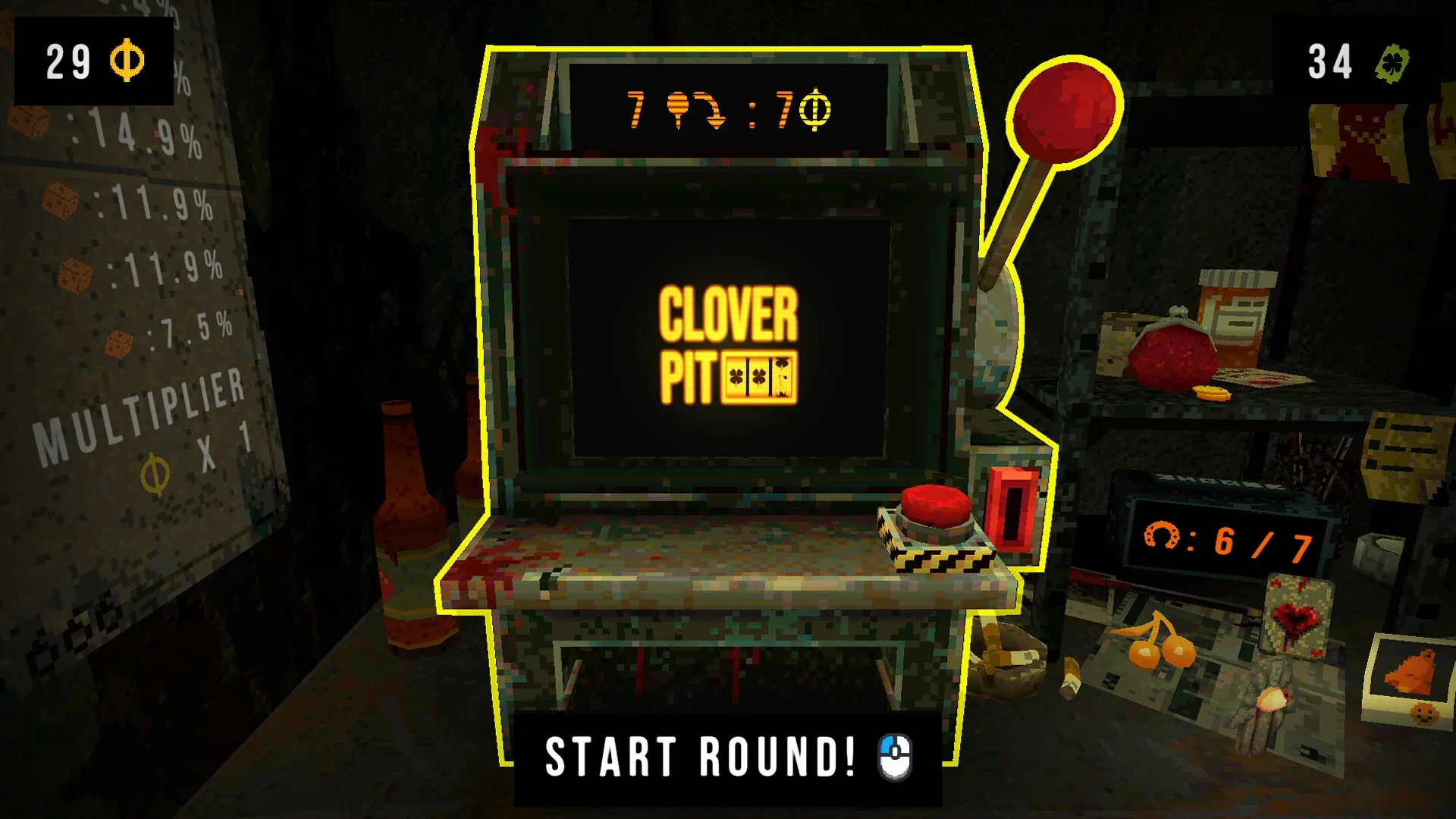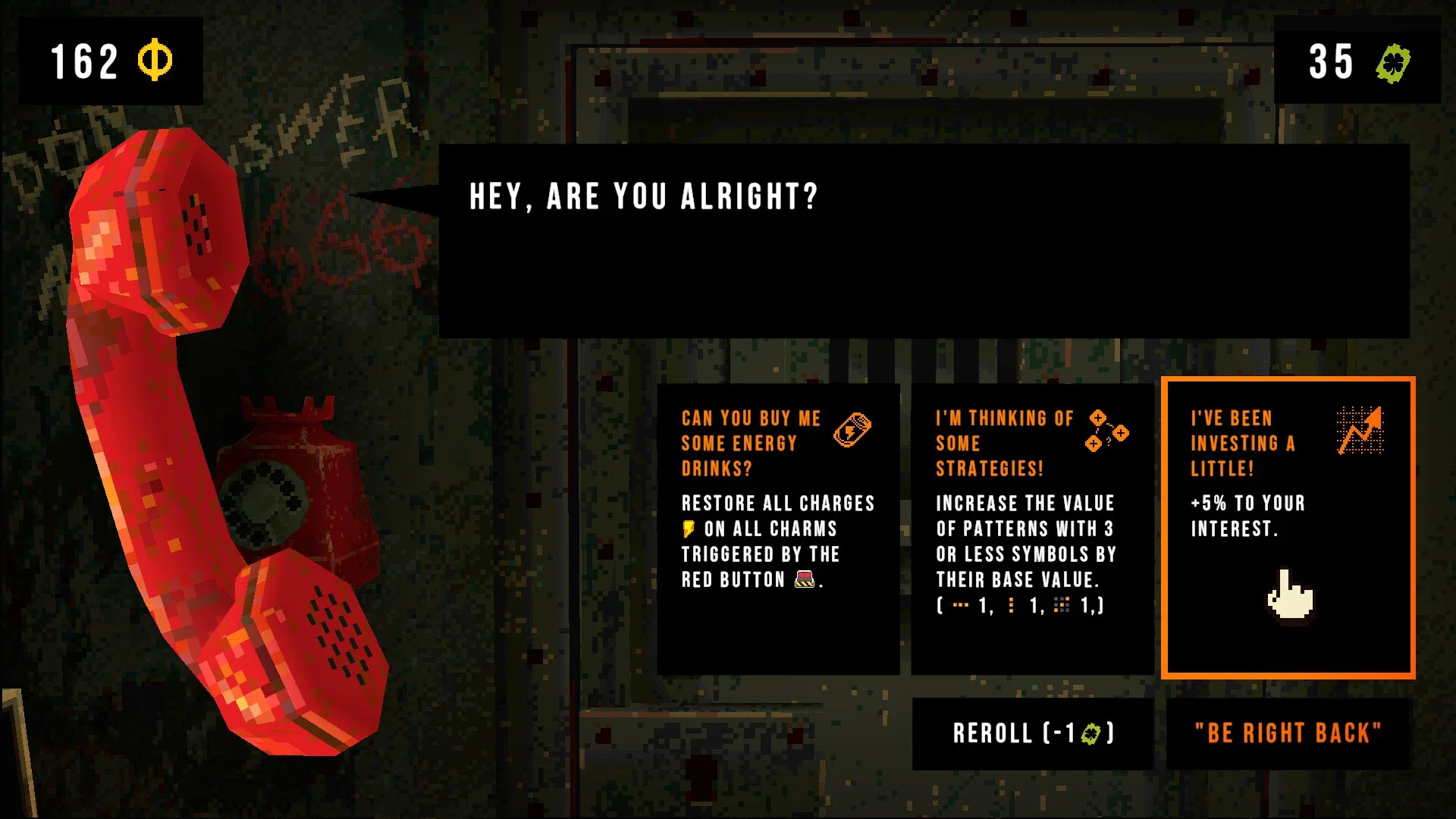What the Hell is CloverPit
It looks like an old-school computer game. It plays like a demonic, soul-crushing roguelike that will consume your every waking thought. Let's talk about CloverPit.
If you've logged into Steam recently, you've probably seen it lurking on the front page: CloverPit. At first glance, it looks like a simple, retro-style game. You're in a rusty cell with a slot machine. You pull a lever, symbols spin, you win money. How complicated could it be? The answer is: terrifyingly so. This game isn't just a game of chance; it's a deep, complex, and brutally unforgiving roguelike strategy game disguised as a one-armed bandit.
It has exploded in popularity for a reason. Described by the developers as the "demonic lovechild of Balatro and Buckshot Roulette," it’s one of a new breed of games that turns a simple concept into an engine for incredible strategic depth. It’s an addictive, cleverly designed machine that will have you scribbling notes like a madman. So, what exactly is this game that has everyone in a chokehold? Let's break it down.
The Premise: Pay Your Debts or Lose Your Soul
The setup is pure psychological horror. You're trapped in a dingy cell with a slot machine and an ATM, and you're in debt to a mysterious, demonic entity that calls you on the phone. Every few rounds, you have a "deadline" to pay off an ever-increasing amount of money. Fail to pay, and it's game over. To earn money, you spin.
But that's where the simplicity ends. This isn't your grandma's Vegas slot machine. This one plays by its own cruel, intricate rules, and as we found in our full CloverPit review, it's a hell of a ride.
It's Not Luck, It's Math
The first thing you need to understand is that almost nothing in CloverPit is truly random. The game is a clockwork of hidden probabilities and scheduled events.
The Symbols are Weighted: Lemons and Cherries are far more likely to appear than high-value Sevens. The game gives you ways to influence these odds through phone calls and items, but you're always fighting against the house edge.
"Luck" is a Brute Force Mechanic: The Luck stat isn't just a vague bonus. Each point of Luck literally forces one symbol on the reels to change to another matching one. With 15 Luck, you are guaranteed a jackpot. It’s a deterministic system you can manipulate.
The Game Helps You (Sometimes): The game has a "Spontaneous Luck" system that gives you random boosts. Except they're not random at all. They happen on a fixed, predictable schedule. Learning to anticipate these scheduled lucky spins is a core part of mastering the game. If you want to dive deep into the math, our Beginner's Guide to CloverPit breaks it all down.
The Roguelike Core: Items and Builds
This is where the real addiction kicks in. There are over 160 different "Lucky Charms" (items) in the game that completely change how you play. Some give you more spins, some increase the value of certain symbols, and some break the rules of the game in wild and wonderful ways.
This item system allows for an incredible variety of "builds." You might focus on a Clover build, stacking items that boost the value and frequency of clovers. Or you could go for an Interest build, where you make more money by having money. There's even a high-risk 666 build, which revolves around intentionally triggering the demonic "666" combination for powerful effects.
The Story: Good vs. Evil
As you play, you'll start to uncover a hidden narrative. The game has multiple endings, including a "bad" ending and a secret "true" ending. Reaching the true ending isn't about winning; it's about following a series of cryptic steps involving collecting skeleton parts, ignoring phone calls from the devil, and manipulating the 666 system itself.
It turns the game from a simple score-chaser into a full-blown mystery. If you want to spoil it for yourself, we've got a complete walkthrough on how to get the secret 999 ending.
Why Is It So Damn Popular?
CloverPit has gone viral because it perfectly blends the simple, dopamine-fueled loop of a slot machine with the deep, strategic complexity of a hardcore roguelike. Every run is different. Every item choice matters. And the feeling of finally "breaking" the game with an overpowered combination of charms is one of the most satisfying experiences in gaming right now.
It's a game that respects your intelligence by hiding its true nature. It presents itself as a game of luck, then slowly reveals itself to be a game of pure knowledge and system mastery. It's challenging, it's addictive, and it's one of the most unique indie hits to come out in years. Now if you'll excuse me, I have a debt to pay.

